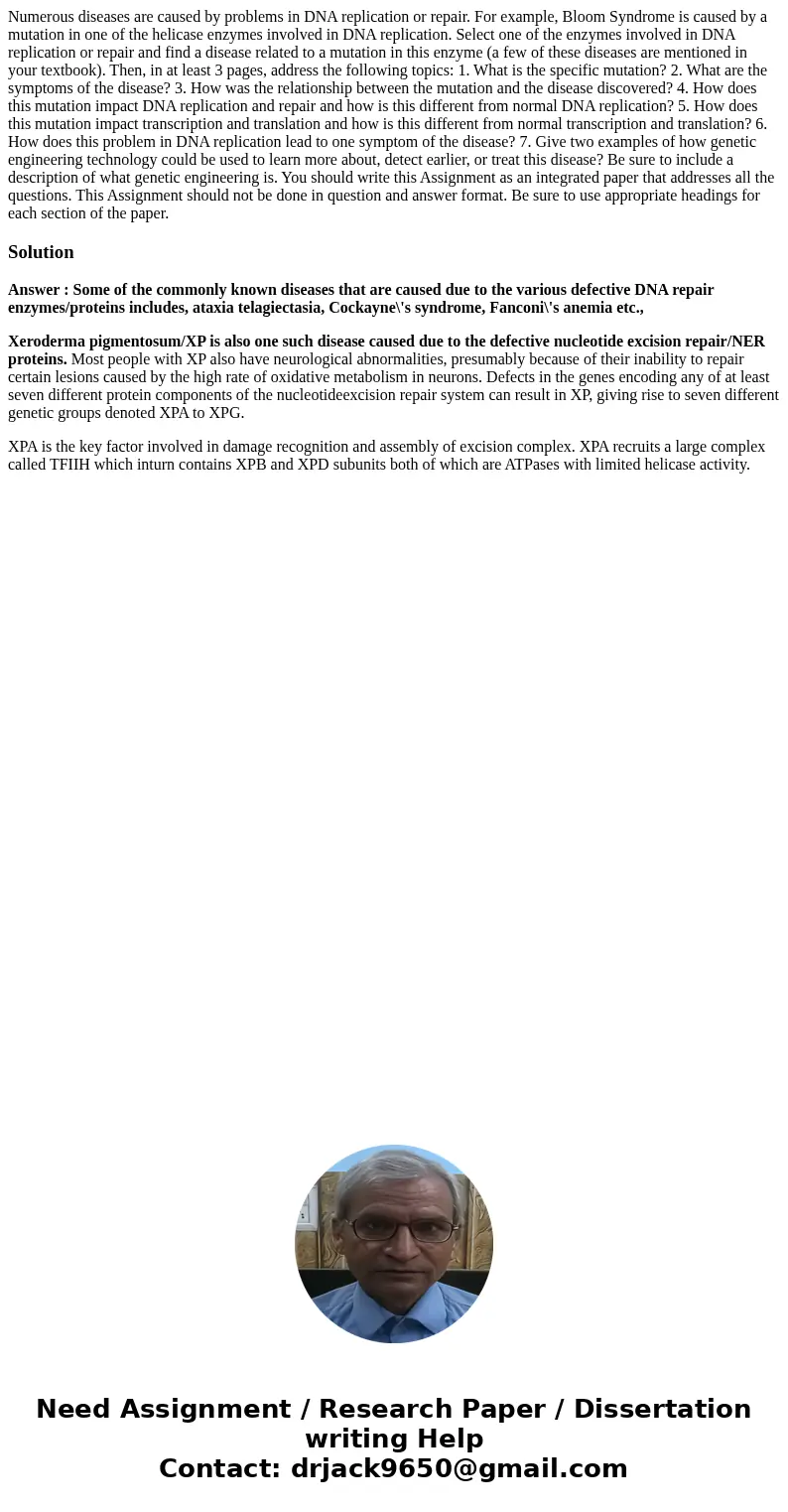Numerous diseases are caused by problems in DNA replication
Numerous diseases are caused by problems in DNA replication or repair. For example, Bloom Syndrome is caused by a mutation in one of the helicase enzymes involved in DNA replication. Select one of the enzymes involved in DNA replication or repair and find a disease related to a mutation in this enzyme (a few of these diseases are mentioned in your textbook). Then, in at least 3 pages, address the following topics: 1. What is the specific mutation? 2. What are the symptoms of the disease? 3. How was the relationship between the mutation and the disease discovered? 4. How does this mutation impact DNA replication and repair and how is this different from normal DNA replication? 5. How does this mutation impact transcription and translation and how is this different from normal transcription and translation? 6. How does this problem in DNA replication lead to one symptom of the disease? 7. Give two examples of how genetic engineering technology could be used to learn more about, detect earlier, or treat this disease? Be sure to include a description of what genetic engineering is. You should write this Assignment as an integrated paper that addresses all the questions. This Assignment should not be done in question and answer format. Be sure to use appropriate headings for each section of the paper.
Solution
Answer : Some of the commonly known diseases that are caused due to the various defective DNA repair enzymes/proteins includes, ataxia telagiectasia, Cockayne\'s syndrome, Fanconi\'s anemia etc.,
Xeroderma pigmentosum/XP is also one such disease caused due to the defective nucleotide excision repair/NER proteins. Most people with XP also have neurological abnormalities, presumably because of their inability to repair certain lesions caused by the high rate of oxidative metabolism in neurons. Defects in the genes encoding any of at least seven different protein components of the nucleotideexcision repair system can result in XP, giving rise to seven different genetic groups denoted XPA to XPG.
XPA is the key factor involved in damage recognition and assembly of excision complex. XPA recruits a large complex called TFIIH which inturn contains XPB and XPD subunits both of which are ATPases with limited helicase activity.

 Homework Sourse
Homework Sourse